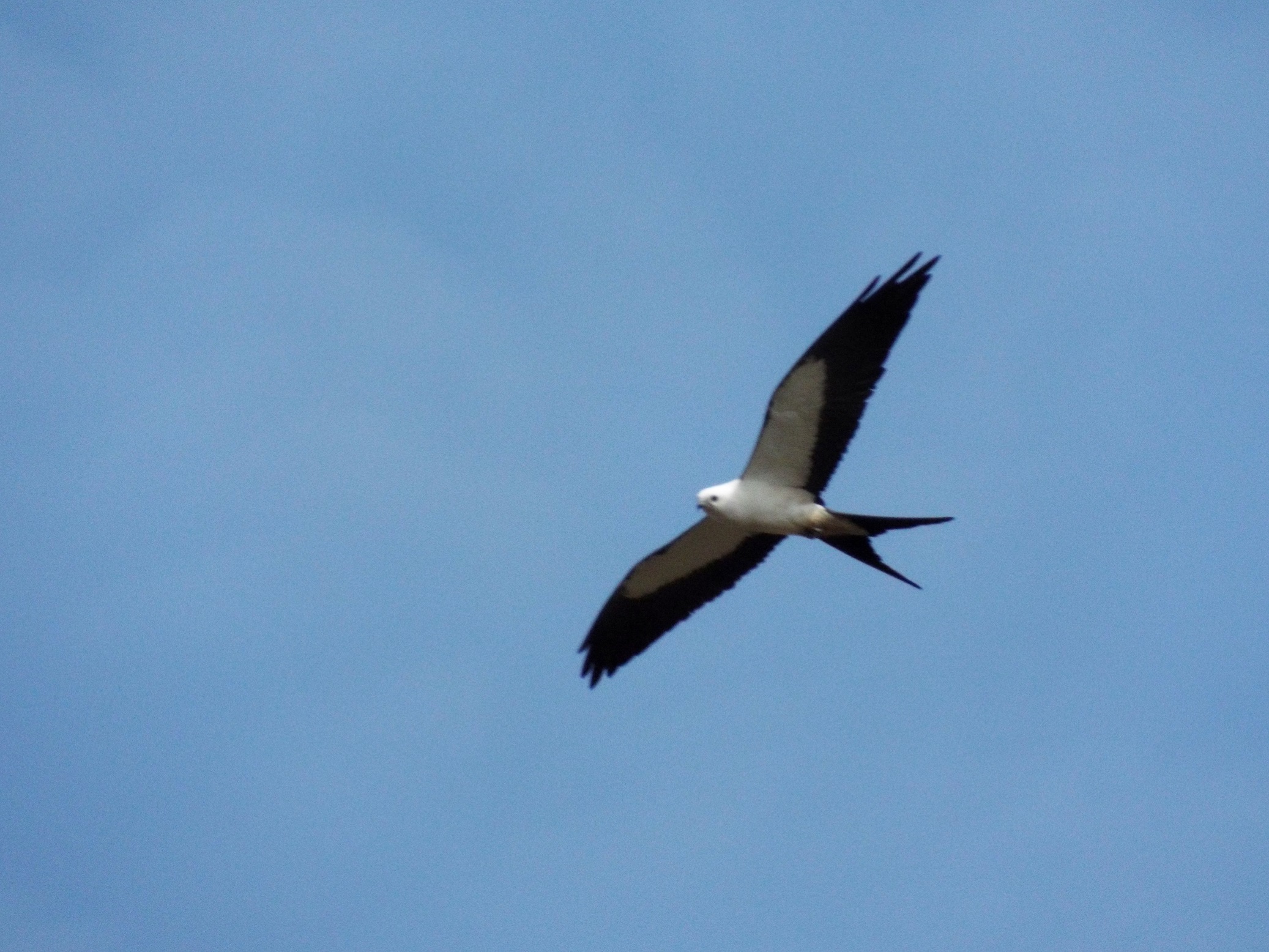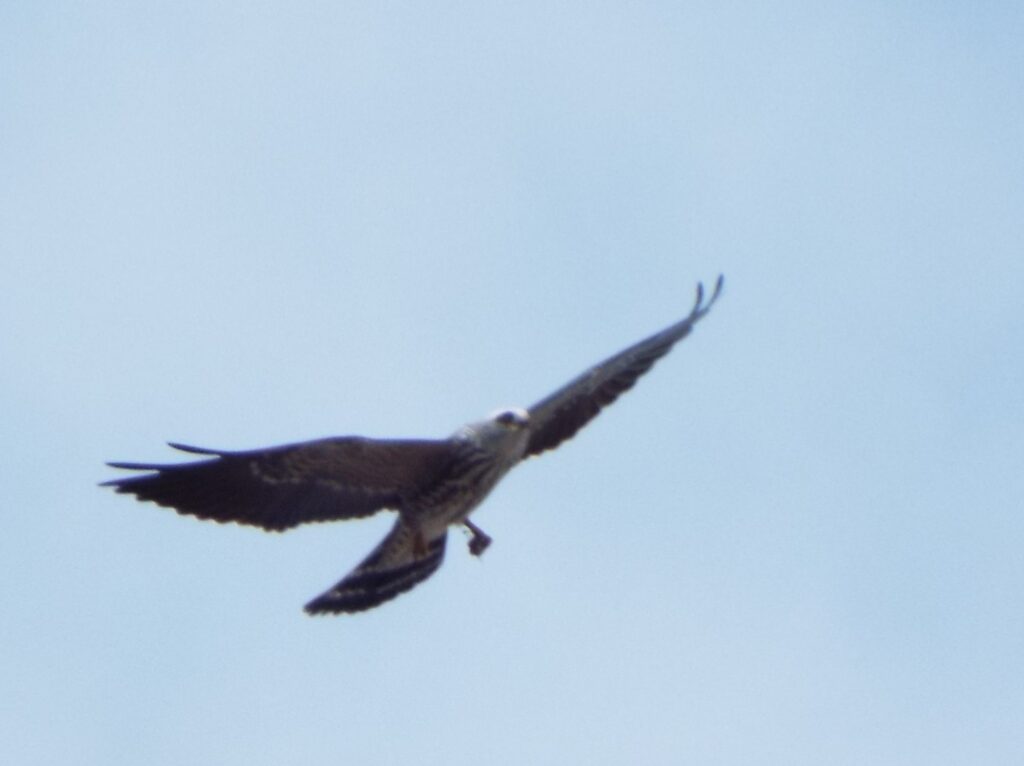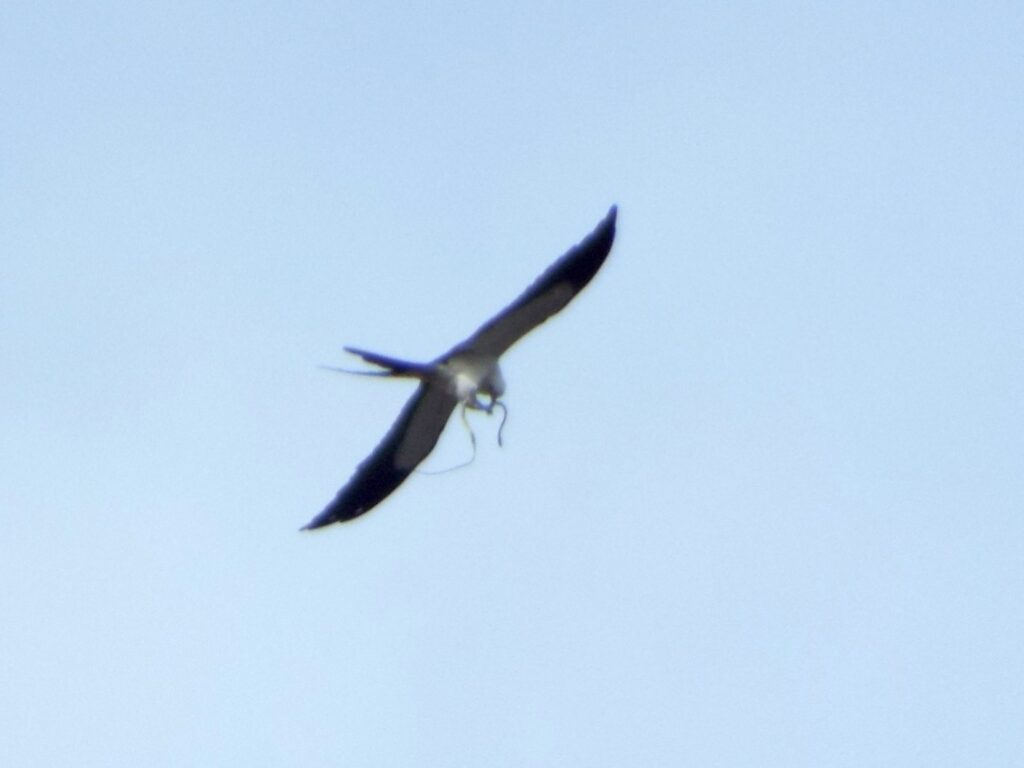




This week for Flora and Fauna Friday, were taking a look at a pair of raptors who glide into our horizon every summer. This week were talking about the Kites.
Here in on Edisto we have two species of Kite that regularly grace our skies come summer to feed and breed. They are the Mississippi Kite (Ictinia mississippiensis) and the Swallow-tailed Kite (Elanoides forficatus). Both species are similar, but not identical, in habits, habitat, diet, and behavior. Kites are highly agile and efficient fliers. They spend their days hunting on the wing. Soaring high over fields, marshes, and open wetlands or skimming just a few feet above the treetops. Rarely ever flapping their wings. Kites feed primarily on large insects, like beetles, wasps, and moths, that they catch in mid-air or on small vertebrates, like lizards, frogs, and bats, that they snatch from the treetops. Kites take their meals on the wing, eating it from their talons. Kites are rather social and can often be seen hunting in large swarms of birds over open areas. Mississippi Kites are much more social than their Swallow-tailed cousins but the latter won’t hesitate to join in on a feeding frenzy if the opportunity arises.
Both species are partial to lowland forests with intermittent open habitat, but the Swallow-tailed is definitely the more specialized of the two. Swallow-tailed Kites have a strong preference for swamps, marshes, and floodplain, riparian, and bottomland forests. Mississippi Kites are more generalist in habitat, utilizing some drier forest habitats as well as pastures, farmland, and even urban areas. Predictably, Mississippi Kites thus have a much larger range and are found throughout much of the state. Swallow-tailed Kites are almost exclusively found in the coastal plain. Both species are common here on Edisto in the summer, but the Mississippi Kite is definitely easier to find. There’s usually at least one, if not 20, circling over the fields at King’s Market. Swallow-tailed Kites are harder to pin down but the edges of lowland forests or marshes are always a good bet.